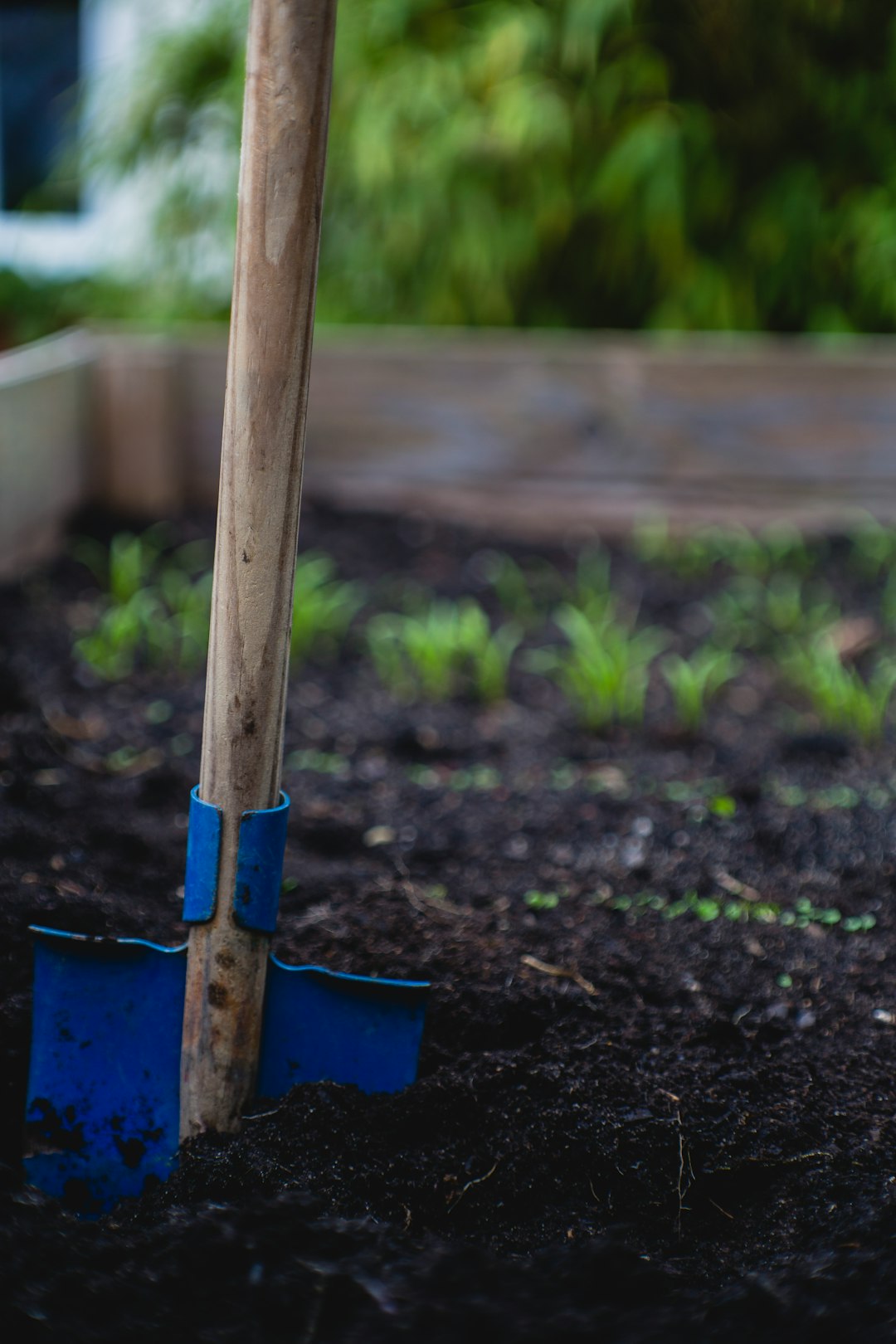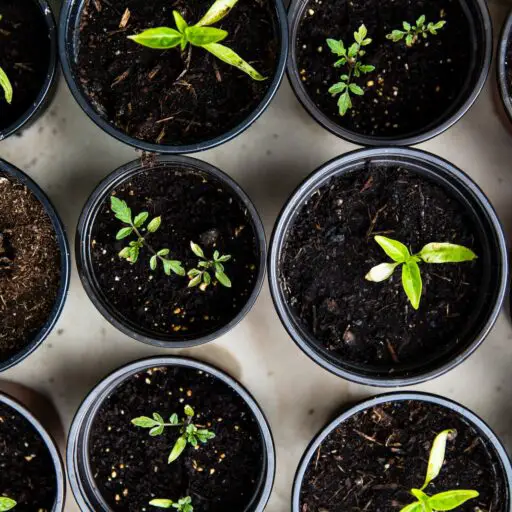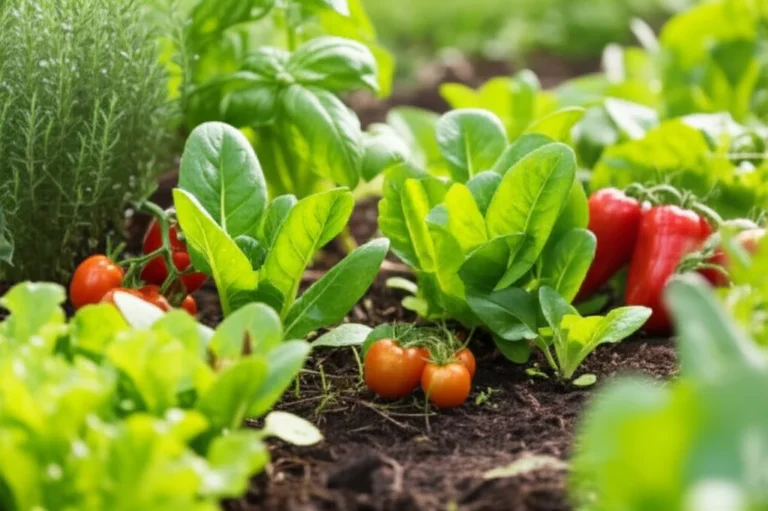Support our educational content for free when you purchase through links on our site. Learn more

Ever wondered which crops could turn your humble community garden into a cash-generating green goldmine? Picture this: a small plot bursting with vibrant microgreens, fragrant lavender, and juicy heirloom tomatoes, all thriving and raking in steady profits. But which crops truly deliver the best bang for your buck? Spoiler alert: it’s not just about growing what’s easy—it’s about growing smart.
In this comprehensive guide, we dive deep into the 15 most profitable crops you can grow in your community garden in 2025. From quick-turnaround microgreens to specialty medicinal herbs, we’ll help you balance high yield with high value, optimize your space with vertical gardening, and master seasonality to keep your harvest—and your income—flowing year-round. Plus, we’ll share insider marketing hacks and sustainable pest management tips to protect your profits naturally. Ready to dig in and grow your green empire? Let’s get started!
Key Takeaways
- Microgreens, herbs, and leafy greens are top quick-profit crops, ready to harvest in weeks.
- Specialty crops like lavender, ginseng, and saffron offer high-value, niche market opportunities.
- Vertical gardening and crop rotation maximize space and ensure continuous harvests.
- Organic and sustainable practices protect your garden and appeal to eco-conscious buyers.
- Effective marketing strategies and community engagement boost sales and customer loyalty.
👉 Shop Our Top Picks:
- Microgreens Growing Kits on Amazon | Walmart
- Lavender Plants & Seeds on Proven Winners | Amazon
- Hydroponic Vertical Garden Systems on Home Depot | Amazon
Ready to turn your community garden into a thriving, profitable oasis? Keep reading to uncover the secrets!
Table of Contents
- Quick Tips and Facts: Jumpstart Your Profitable Community Garden! 🌱💰
- The Green Gold Rush: A Brief History of Profitable Crop Growing in Community Gardens 🌿📜
- 1. Top 15 Most Profitable Crops to Grow in Community Gardens: From Microgreens to Medicinals 🥬🌶️💵
- 2. High-Yield vs. High-Value: Choosing the Right Crops for Maximum Profit 🌽💸
- 3. Seasonality and Crop Rotation: Timing Your Planting for Continuous Profit 🌞❄️🔄
- 4. Organic and Specialty Crops: Tapping into Niche Markets for Bigger Bucks 🌻🍅🌿
- 5. Vertical Gardening and Space Optimization: Growing More to Earn More 📏🌱🏢
- 6. Community Garden Marketing Hacks: Selling Your Crops Like a Pro 🎯🛒
- 7. Pest Management and Sustainable Practices: Protecting Your Profits Naturally 🐞🌿✅
- 8. Tools, Resources, and Brands We Trust for Profitable Community Gardening 🛠️🌾
- 9. Free Market Gardening Start-up Guide: Your Blueprint to Community Garden Success 📘🌱
- 10. Our Latest Recommendations: High-Income Crops You Can’t Afford to Miss 💡💰
- 11. More High-Profit Crop Ideas: Beyond the Usual Suspects 🌶️🥕🌿
- 12. See Something You Like? Share Your Garden Wins and Tips! 🌟🤝
- 13. Got Questions or Stories? Let’s Chat About Profitable Community Gardening! 💬🌻
- Conclusion: Harvesting Success from Your Community Garden 🌾🏆
- Recommended Links: Dive Deeper into Profitable Gardening Resources 🔗🌿
- FAQ: Your Burning Questions About Profitable Community Crops Answered! ❓🌱
- Reference Links: Trusted Sources Behind Our Gardening Wisdom 📚🌍
Quick Tips and Facts: Jumpstart Your Profitable Community Garden! 🌱💰
To learn how community gardens make money, visit our article at https://www.community-gardening.org/how-do-community-gardens-make-money/.
Starting a profitable community garden requires careful planning, research, and a deep understanding of your target market. As gardeners at Community Gardening™, we specialize in Grow Together through Community Gardening. Here are some quick tips and facts to get you started:
- Choose high-demand crops that are easy to grow and maintain.
- Consider seasonality and crop rotation to ensure a continuous harvest.
- Soil quality is crucial; invest in soil testing and amendments as needed.
- Vertical gardening and space optimization can significantly increase your yields.
- Develop a marketing strategy to reach your target audience and sell your products effectively.
Getting Started with Profitable Crops
When selecting crops, consider factors like climate, soil type, and market demand. You can find more information on Garden Design Ideas at https://www.community-gardening.org/category/garden-design-ideas/. Some of the most profitable crops for community gardens include:
- Microgreens: easy to grow, high in demand, and can be harvested in as little as 1-3 weeks.
- Herbs: popular among chefs and home cooks, and can be grown in a variety of conditions.
- Leafy greens: nutritious, easy to grow, and can be harvested continuously.
The Green Gold Rush: A Brief History of Profitable Crop Growing in Community Gardens 🌿📜

Community gardens have been around for centuries, but the concept of growing profitable crops in these shared spaces is a more recent development. As the demand for locally grown, organic produce continues to rise, community gardens are becoming increasingly important. You can learn more about Community Garden Events at https://www.community-gardening.org/category/community-garden-events/.
To succeed in this market, it’s essential to stay up-to-date on the latest trends and best practices. Check out our article on Garden Maintenance Tips at https://www.community-gardening.org/category/garden-maintenance-tips/ for more information.
The Rise of Market Gardening
Market gardening, also known as micro-farming, involves growing a variety of crops on a small scale for sale at farmers’ markets, restaurants, and local grocery stores. This approach allows community gardens to generate income while providing fresh, healthy produce to their members and the wider community. For more information on Community Garden Policies, visit https://www.community-gardening.org/category/community-garden-policies/.
1. Top 15 Most Profitable Crops to Grow in Community Gardens: From Microgreens to Medicinals 🥬🌶️💵
Here are the top 15 most profitable crops to grow in community gardens:
- Microgreens: high in demand, easy to grow, and can be harvested in as little as 1-3 weeks.
- Herbs: popular among chefs and home cooks, and can be grown in a variety of conditions.
- Leafy greens: nutritious, easy to grow, and can be harvested continuously.
- Strawberries: high in demand, easy to grow, and can be harvested in as little as 60 days.
- Raspberries: high in demand, easy to grow, and can be harvested in as little as 60 days.
- Blueberries: high in demand, require specific growing conditions, and can be harvested in as little as 60 days.
- Cucumbers: high in demand, easy to grow, and can be harvested in as little as 50 days.
- Carrots: high in demand, easy to grow, and can be harvested in as little as 60 days.
- Beets: high in demand, easy to grow, and can be harvested in as little as 60 days.
- Radishes: high in demand, easy to grow, and can be harvested in as little as 20 days.
- Green beans: high in demand, easy to grow, and can be harvested in as little as 50 days.
- Peppers: high in demand, easy to grow, and can be harvested in as little as 70 days.
- Tomatoes: high in demand, require specific growing conditions, and can be harvested in as little as 70 days.
- Lavender: high in demand, easy to grow, and can be harvested in as little as 60 days.
- Ginseng: high in demand, require specific growing conditions, and can be harvested in as little as 5-6 years.
Growing Medicinal Herbs
Medicinal herbs like echinacea, calendula, and chamomile are in high demand and can be grown in community gardens. These herbs can be used to create value-added products like teas, tinctures, and salves.
2. High-Yield vs. High-Value: Choosing the Right Crops for Maximum Profit 🌽💸
When it comes to choosing crops for your community garden, it’s essential to consider both high-yield and high-value options. High-yield crops like leafy greens and microgreens can provide a steady stream of income, while high-value crops like lavender and ginseng can generate more significant profits.
Calculating Profit Potential
To calculate the profit potential of a crop, consider factors like market demand, growth rate, and harvest time. You can use online resources like the USDA Plant Hardiness Zone Map to determine which crops are suitable for your area.
3. Seasonality and Crop Rotation: Timing Your Planting for Continuous Profit 🌞❄️🔄
Seasonality and crop rotation are crucial factors in maintaining a continuous profit stream from your community garden. By planting crops at the right time and rotating them regularly, you can ensure a steady supply of fresh produce and minimize the risk of pests and diseases.
Creating a Crop Rotation Plan
To create a crop rotation plan, consider the following steps:
- Determine your growing season: Check the average frost dates and temperature ranges for your area.
- Choose your crops: Select a variety of crops that thrive in your climate and can be harvested at different times.
- Create a planting schedule: Plan your plantings to ensure a continuous harvest and minimize gaps in production.
- Rotate your crops: Rotate your crops regularly to maintain soil health and prevent pests and diseases.
4. Organic and Specialty Crops: Tapping into Niche Markets for Bigger Bucks 🌻🍅🌿
Organic and specialty crops can provide a significant profit boost for community gardens. By tapping into niche markets and growing unique, high-demand crops, you can differentiate your garden from others and attract premium prices.
Growing Organic Crops
Growing organic crops requires a commitment to sustainable practices and natural methods of pest control and fertilization. This can include using compost, cover crops, and integrated pest management techniques.
5. Vertical Gardening and Space Optimization: Growing More to Earn More 📏🌱🏢
Vertical gardening and space optimization can significantly increase the productivity of your community garden. By using trellises, arbors, and wall-mounted planters, you can grow more crops in a smaller area and maximize your profits.
Using Vertical Gardening Systems
Vertical gardening systems like hydroponics and aeroponics can provide a high-yield, space-efficient way to grow crops. These systems use nutrient-rich solutions and aerated water to nourish plants, eliminating the need for soil.
6. Community Garden Marketing Hacks: Selling Your Crops Like a Pro 🎯🛒
Effective marketing is crucial to selling your community garden crops and generating profits. Here are some marketing hacks to help you sell your crops like a pro:
- Develop a brand identity: Create a unique logo, website, and social media presence to promote your garden.
- Build a customer base: Engage with potential customers through social media, email newsletters, and community events.
- Offer value-added products: Create products like jams, sauces, and teas to add value to your crops and attract premium prices.
Creating a Marketing Plan
To create a marketing plan, consider the following steps:
- Define your target market: Identify your ideal customer and their needs.
- Develop a unique selling proposition: Differentiate your garden from others and highlight your unique features.
- Create a marketing budget: Allocate resources for marketing activities like advertising, social media, and events.
- Implement your marketing plan: Execute your marketing strategy and track your results.
7. Pest Management and Sustainable Practices: Protecting Your Profits Naturally 🐞🌿✅
Pest management and sustainable practices are essential to protecting your community garden profits. By using natural methods of pest control and sustainable practices, you can minimize the risk of pests and diseases and maintain a healthy, productive garden.
Using Integrated Pest Management
Integrated pest management (IPM) involves using a combination of techniques to manage pests and diseases. This can include crop rotation, companion planting, and biological control methods.
8. Tools, Resources, and Brands We Trust for Profitable Community Gardening 🛠️🌾
Here are some tools, resources, and brands we trust for profitable community gardening:
- Gardening gloves: Gardening gloves from Amazon | Gardening gloves from Walmart | Gardening gloves from Home Depot
- Irrigation systems: Irrigation systems from Rain Bird | Irrigation systems from Toro | Irrigation systems from Hunter
- Greenhouses: Greenhouses from Amazon | Greenhouses from Walmart | Greenhouses from Home Depot
Using High-Quality Tools and Resources
Using high-quality tools and resources can significantly improve the productivity and profitability of your community garden. Consider investing in durable, efficient, and sustainable products that meet your specific needs.
9. Free Market Gardening Start-up Guide: Your Blueprint to Community Garden Success 📘🌱
Starting a market garden can be a daunting task, but with the right guidance, you can set yourself up for success. Here’s a free market gardening start-up guide to help you get started:
- Define your goals: Determine what you want to achieve with your market garden.
- Conduct market research: Identify your target market and their needs.
- Create a business plan: Develop a comprehensive plan that outlines your strategies, finances, and operations.
- Secure funding: Explore funding options like grants, loans, and crowdfunding.
Creating a Business Plan
To create a business plan, consider the following steps:
- Define your mission statement: Outline your garden’s purpose and values.
- Conduct a SWOT analysis: Identify your strengths, weaknesses, opportunities, and threats.
- Develop a marketing strategy: Outline your plans for promoting your garden and products.
- Create a financial plan: Establish a budget and financial projections.
10. Our Latest Recommendations: High-Income Crops You Can’t Afford to Miss 💡💰
Here are our latest recommendations for high-income crops:
- Microgreens: high in demand, easy to grow, and can be harvested in as little as 1-3 weeks.
- Lavender: high in demand, easy to grow, and can be harvested in as little as 60 days.
- Ginseng: high in demand, require specific growing conditions, and can be harvested in as little as 5-6 years.
Growing High-Income Crops
Growing high-income crops requires careful planning, attention to detail, and a commitment to sustainable practices. Consider investing in high-quality seeds, soil amendments, and irrigation systems to optimize your yields.
11. More High-Profit Crop Ideas: Beyond the Usual Suspects 🌶️🥕🌿
Here are some more high-profit crop ideas to consider:
- Wasabi: high in demand, require specific growing conditions, and can be harvested in as little as 15 months.
- Saffron: high in demand, require specific growing conditions, and can be harvested in as little as 6-8 weeks.
- Mushrooms: high in demand, easy to grow, and can be harvested in as little as 1-3 weeks.
Growing Specialty Crops
Growing specialty crops like wasabi and saffron requires careful attention to detail and a commitment to sustainable practices. Consider investing in high-quality seeds, soil amendments, and irrigation systems to optimize your yields.
12. See Something You Like? Share Your Garden Wins and Tips! 🌟🤝
We’d love to hear about your community garden experiences and tips! Share your stories, ask questions, and get feedback from our community of gardeners.
13. Got Questions or Stories? Let’s Chat About Profitable Community Gardening! 💬🌻
Do you have questions about profitable community gardening? Share your stories, ask questions, and get feedback from our community of gardeners. Visit our Community Garden Events page at https://www.community-gardening.org/category/community-garden-events/ to learn more about upcoming events and workshops.
Conclusion: Harvesting Success from Your Community Garden 🌾🏆

Wow, what a journey through the lush world of profitable community gardening! From the lightning-fast cash flow of microgreens to the patient, high-value allure of ginseng and saffron, there’s a crop (or ten) for every gardener’s taste and ambition. Remember, the secret sauce to success is balancing high-yield with high-value crops, optimizing your space with vertical gardening, and mastering seasonality and crop rotation to keep those profits rolling in year-round.
We also uncovered the power of organic and specialty crops to tap into niche markets, and how savvy marketing can turn your harvest into hard cash. Plus, sustainable pest management ensures your profits aren’t eaten away by unwanted guests.
If you’re feeling overwhelmed, don’t worry! Start small, experiment with a few crops, and grow your knowledge alongside your garden. As we promised earlier, planning and research are your best friends — so keep those soil tests, market surveys, and community connections active.
At Community Gardening™, we confidently recommend starting with microgreens and herbs for quick wins, then gradually adding specialty crops like lavender and mushrooms as you gain experience. Use trusted tools and brands to maximize your efficiency and product quality.
Ready to dig in? Your profitable community garden awaits! 🌿💰
Recommended Links: Shop Our Top Picks and Resources 🔗🌿
-
Lavender Plants & Seeds:
Amazon | Walmart | Proven Winners Official Website -
Hydroponic & Vertical Gardening Systems:
Amazon | Home Depot -
Gardening Tools & Irrigation:
Rain Bird Irrigation | Toro Irrigation | Hunter Industries -
Books for Market Gardeners:
FAQ: Your Burning Questions About Profitable Community Crops Answered! ❓🌱

What are the easiest crops to grow in a community garden for beginners?
Microgreens, radishes, leafy greens (like lettuce and kale), and herbs (basil, parsley, mint) are fantastic starter crops. They grow quickly, require minimal space, and are forgiving of minor mistakes. For example, microgreens can be harvested in as little as 7-14 days, giving you rapid feedback and income. Plus, these crops thrive in containers or raised beds, making them ideal for community gardens with limited space. Starting with these builds confidence and sets a solid foundation for more complex crops.
How can I determine the most profitable crops to grow in my specific climate and region?
Start by researching your USDA Plant Hardiness Zone and local growing conditions. Use resources like the USDA Plant Hardiness Zone Map to identify crops suited to your climate. Next, visit local farmers’ markets, grocery stores, and restaurants to gauge demand. Talk to other gardeners or join local gardening groups to learn what sells well. Soil testing is crucial to understand nutrient availability and pH, which affects crop success. Finally, consider season length and frost dates to plan your planting schedule effectively.
What are some tips for maximizing yield and profit in a community garden setting?
Optimize Space and Time
- Use vertical gardening and succession planting to maximize space and harvest frequency.
- Implement crop rotation to maintain soil health and reduce pests.
- Invest in raised beds and high-quality soil amendments to boost productivity.
Sustainable Practices
- Use compost and organic fertilizers to improve soil fertility naturally.
- Employ integrated pest management (IPM) to minimize crop loss without harmful chemicals.
Marketing and Sales
- Diversify your crops to appeal to a wider market.
- Offer value-added products like herb blends or dried flowers.
- Build relationships with local buyers and participate in community events.
Read more about “What Are the 10 Hidden Disadvantages of Community Gardens? 🌱”
How can I market and sell my community garden produce to locals and at farmers’ markets?
Start by building a strong brand identity that highlights your garden’s unique story and sustainable practices. Use social media platforms like Instagram and Facebook to showcase your crops and engage with your community. Attend local farmers’ markets and community events to establish face-to-face connections. Consider offering CSA (Community Supported Agriculture) shares or subscription boxes for steady income. Packaging and presentation matter—use eco-friendly materials and clear labeling to attract conscious consumers. Lastly, don’t underestimate the power of word-of-mouth; happy customers are your best promoters!
Reference Links: Trusted Sources Behind Our Gardening Wisdom 📚🌍
- USDA Plant Hardiness Zone Map
- Rain Bird Irrigation Systems
- Proven Winners Lavender Plants
- Market Gardening 101: Profitable Crops to Grow in Small Gardens
- Integrated Pest Management (IPM) Principles
- Community Gardening™ Benefits of Community Gardens
- Community Gardening™ Garden Maintenance Tips
- Community Gardening™ Garden Design Ideas
Ready to turn your community garden into a thriving, profitable oasis? Let’s grow together! 🌿💚



